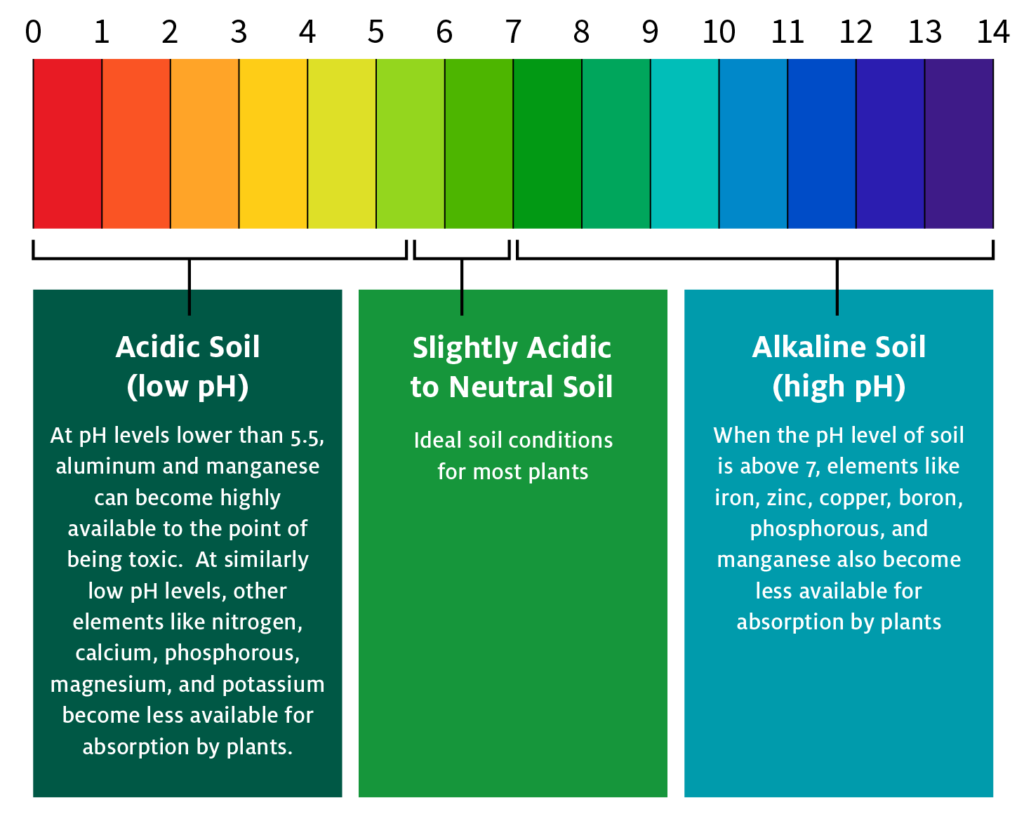Cost Benefits of Liquid Calcium vs. Lime
The traditional practice of applying limestone has been the cornerstone of soil pH management for as long as many of us can remember. That being said, the cost benefits of liquid calcium are plentiful when compared to those that traditional lime offers. Products like Pro-Cal and Advanced-Cal present a modern alternative to improving soil health and promise a more efficient and affordable solution.
In this post, we want to analyze the cost benefits that liquid calcium brings to the table when compared to traditional lime, focusing on initial investment, long-term soil health benefits, yield improvements, and potential savings. We aim to provide a comprehensive understanding of the economics of soil health, guiding AgriTec’s readers toward more informed and sustainable agricultural practices.
Understanding Soil Health
Soil health determines the capacity of soil to function as a living ecosystem, supporting plant, animal, and human health. The soil’s pH level, a measure of the acidity or alkalinity, significantly influences nutrient availability and microbial life. Ideal soil pH levels vary by crop but generally range from slightly acidic to neutral. Maintaining this balance is challenging, especially in areas prone to acidification or alkalization due to environmental factors and farming practices.

The significance of soil health transcends beyond the immediate yield, although liquid calcium is known to have fast-acting results. The long-term sustainability of farming operations also affects soil health. Healthy soil retains water more efficiently, supports a more robust and diverse microbial ecosystem, and reduces the need for chemical inputs by facilitating nutrient cycling. However, achieving and maintaining optimal soil health requires careful management of soil pH, a task that has traditionally relied on the application of lime materials.
Traditional lime, or calcium carbonate, has been the go-to method for correcting soil acidity. While effective, its application comes with certain limitations, such as slow reaction times and the need for heavy mechanical spreading equipment. The emergence of liquid calcium products promises to address these challenges by offering a more readily available calcium source that can more quickly adjust soil pH levels. As we explore the economics of these two options, understanding the fundamental importance of soil health and the role of soil pH management sets the stage for a more detailed analysis.
Traditional Lime: An Overview
Traditional lime, primarily composed of calcium carbonate (CaCO3), has been a staple in agriculture for centuries. Its primary role is to neutralize acidic soils, thereby improving soil structure, increasing nutrient availability, and enhancing microbial activity. However, the application of traditional lime is not without its challenges and costs.
Initial Investment Costs: The cost of traditional lime includes the price of the material itself and the application process. Lime must be purchased in bulk, transported to the farm, and spread using specialized equipment. The need for mechanical spreading, often requiring professional services, adds a significant cost layer, especially for larger operations.
Long-term Benefits for Soil Health and Yield: Lime application, while initially costly and labor-intensive, offers long-term benefits. It slowly releases calcium into the soil, gradually improving pH levels. This slow release can be beneficial, providing a steady improvement in soil conditions over several years. Improved soil pH enhances nutrient availability, which can lead to increased crop yields and quality.
Potential Drawbacks and Limitations: One of the main drawbacks of traditional lime is its slow reaction time. It can take several months to years for lime to fully react with the soil and correct pH levels. Additionally, lime’s effectiveness depends on proper application and incorporation into the soil, requiring additional labor and equipment.
Liquid Calcium: A Modern Alternative
Liquid calcium is a newer soil amendment product designed to offer a quicker, more efficient solution to soil acidity problems. Unlike traditional lime, liquid calcium is applied in a liquid form, allowing for more uniform distribution and faster soil penetration.
Initial Investment Costs: While the unit cost of liquid calcium can be higher than traditional lime, its application process is less labor-intensive and does not require specialized spreading equipment. Liquid calcium can be applied using standard farm spraying equipment, reducing the overall initial investment required for application.
Benefits for Soil Health: Liquid calcium’s main advantage lies in its rapid absorption and reaction time. It can adjust soil pH levels more quickly than traditional lime, making nutrients more readily available to plants. This rapid adjustment can be particularly beneficial in correcting pH in time for growing seasons, ensuring that crops have access to necessary nutrients when they need them most.
Yield Improvements and Potential Savings: The faster reaction time of liquid calcium not only improves soil health sooner but can also lead to quicker yield improvements. Higher crop quality and yields can be realized sooner, potentially providing a faster return on investment. Additionally, the reduced need for heavy machinery and the ability to integrate with existing spraying operations can offer long-term savings on labor and equipment.
Cost-Benefit Analysis
To compare the economic viability of liquid calcium versus traditional lime, we need to consider several factors, including initial investment, soil health benefits, yield improvements, and long-term savings.
Initial Investment:
- Traditional Lime: Requires a higher initial investment due to the cost of bulk material, transportation, and specialized equipment for application.
- Liquid Calcium: Higher unit cost but lower overall application costs. Can be applied with existing farm equipment, reducing initial investment.
Soil Health Benefits:
- Traditional Lime: Offers a slow, steady improvement in soil pH. Its effects are long-lasting, providing gradual benefits to soil structure and nutrient availability.
- Liquid Calcium: Rapidly improves soil pH, making it an excellent option for quick corrections. It supports faster nutrient uptake but may require more frequent applications over time.
Yield Improvements:
- Both traditional lime and liquid calcium can significantly improve crop yields by enhancing soil health. However, the quicker action of liquid calcium means that yield improvements can be realized sooner, potentially leading to faster returns on investment.
Long-term Savings:
- Traditional Lime: While the initial application is costly, its long-lasting effects may mean fewer applications over time, potentially reducing long-term costs.
- Liquid Calcium: May require more frequent applications but offers savings on application costs and equipment. The improved yield and quality of crops can also contribute to long-term profitability.
Case Studies and Real-World Applications
Several case studies highlight the benefits and challenges of both lime and liquid calcium. For instance, a Midwestern farm reported significant improvements in soil pH and crop yields within one growing season after switching to liquid calcium, citing the ease of application and faster results as key benefits. Conversely, a Southern farm utilizing traditional lime observed steady yield increases over several years, emphasizing the value of long-term soil health improvements.
These examples illustrate the varying needs and outcomes that farmers experience, suggesting that the choice between lime and liquid calcium depends on specific farm conditions, immediate soil health needs, and long-term management strategies.
Conclusion
The economics of soil health presents a complex puzzle, with both traditional lime and liquid calcium offering unique benefits and challenges. While traditional lime remains a reliable option for gradual soil improvement, liquid calcium emerges as a modern alternative promising faster results and potential cost savings. Ultimately, the choice between the two should be guided by a detailed cost-benefit analysis, considering immediate needs and long-term goals. As agriculture continues to evolve, so too will the strategies for maintaining soil health, ensuring the sustainability and profitability of farming for generations to come.


